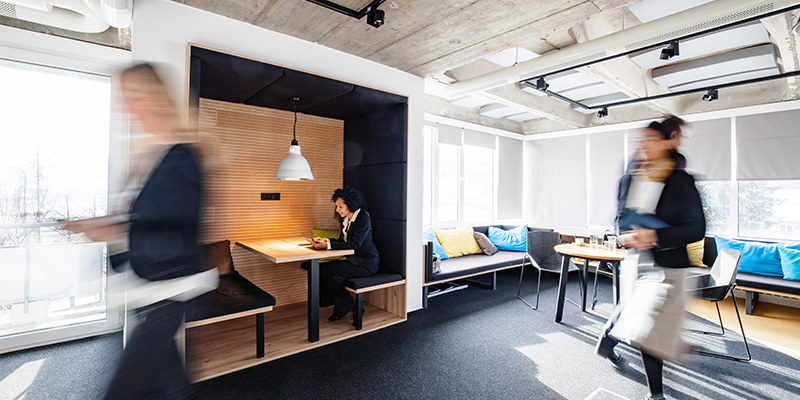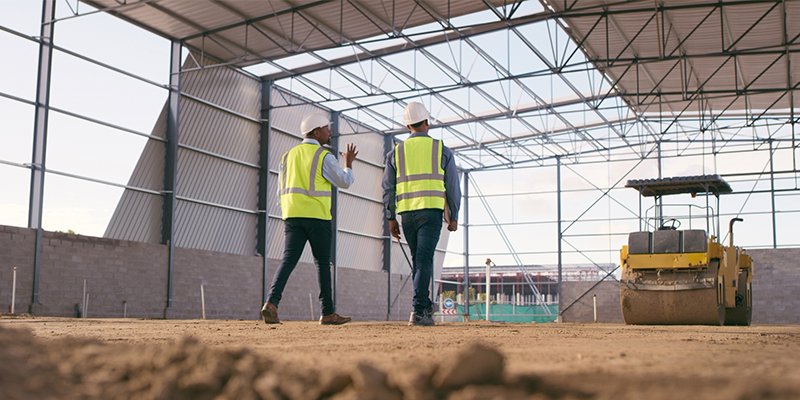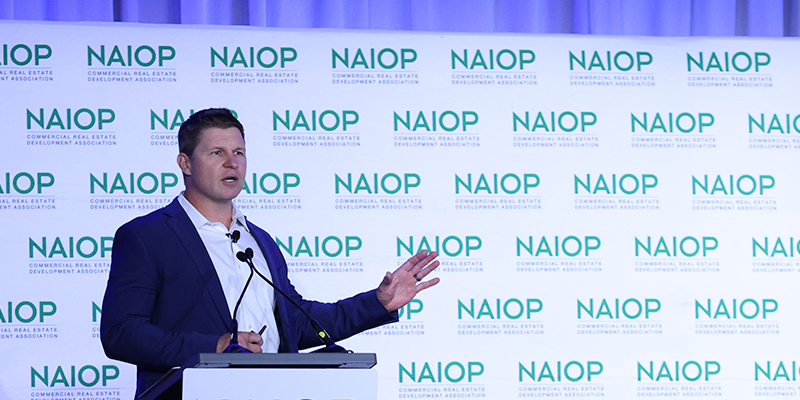COVID-19 revealed to the world that work is no longer a place we go – it is an experience we shape. Returning to the office as it used to be may seem pleasantly simple, but that would leave a historic opportunity on the table. Far deeper value lies in designing the office anew – this time, with the human experience front and center.
Now is the time to apply the hard-won lessons of the pandemic to workplace design. An experiential, play-oriented space incorporating the best of remote working and in-person working can help meet employee needs and support different workstyles. In a post-pandemic world, knowledge workers will shine brighter in social, inclusive environments purposefully designed to help them feel authentic, connected and healthy.
In the first post in this series, we explored key questions to ask on the road to a more flexible, experiential workplace. Here, let’s explore design considerations in shaping corporate interiors where employees will feel comfortable, inspired and welcome – enabling them to bring their best selves to the office.
Five Considerations for a Healthier, More Human Workplace
Every organization defines their optimal workplace environment differently. But the following principles will help decision-makers in the effort to achieve a more experiential workplace.
1. Understand how design affects business outcomes. Reinventing a workplace is a big job no matter how you slice it, but it is a smoother process when organizational leaders recognize the critical ways design can impact the larger business goals.
From enhancing business productivity and reducing energy costs to sparking culture and collaboration, the physical condition of the workplace should not only align with brand goals – it should fuel them. Involving stakeholders in visioning sessions early in the process can help to maintain a steady focus on organizational values. Technology tools such as artificial intelligence and predictive analytics can help stakeholders conceptualize a space and run different scenarios to reveal functional design and configuration options.
2. Think beyond 9-5 with physical and digital features. Amid the rise of hybrid work, it is important to create spaces where people can connect wherever, and whenever, makes the most sense. This includes integrating connective technology in design, like sophisticated videoconferencing rooms where teams can ideate alongside their remote-working colleagues.
Embracing the need to work on flexible schedules includes creating more flexible, multipurpose space throughout the office, so different employees can get what they need from different spaces, at different times, without sacrificing space utilization goals. For example, adding in moveable walls that allow a conference room to be instantly converted to private spaces for heads-down work when there is immediate need. User-controlled features such as this further empower the employee to impact his/her own work environment by being able to configure the space to do what it needs to do when it needs to do it. An empowered employee is an engaged employee, and an engaged employee is a productive employee.
3. Empower employee choice with an interior neighborhood of curated experiences. Instead of asking teams to shuffle between office and conference rooms according to task, give them a variety of space types to choose from depending on their work styles and needs. Picture, for starters, a quiet reading room, just down the hall from a huddle area, which sits next to a large conference room with retractable doors that open for larger events. Meanwhile, a large town hall or café area offers opportunity for both work and play. Even stairwells and corridors can be configured for casual interaction and easy flow.
My Unispace colleague Hannah Hackathorn, regional design principal, suggests this as a starting point: “Visualize an employee’s journey through the workplace in the same way you might picture moving through your own home,” she says. “The idea is to give people freedom to move freely between the rooms of the house, so to speak, whether they’re craving a quick brainstorm, a comfortable place to check email, a moment of respite, or something in between.”
4. Think human. People aren’t cookie cutters, so why are so many offices exactly that? As social, playful beings, humans thrive in unique environments. Cultivate environments where fundamental human activities – people watching, having fun, experimenting, learning and playing – can all take place.
Health and well-being are part of this, too. Many firms have invested in areas like gyms, wellness rooms and meditation spaces. These are important amenities, but design can go further in this effort. Embracing biophilia is one way design can support well-being, from incorporating more natural light to positioning large planters in place of walls.
5. Infuse brand throughout the workplace. In this time of intense transformation, a brand-focused environment gives teams that invaluable sense of ”we’re all in this together,” contributing to a more cohesive culture and focused productivity. Plus, memorable branding resonates with clients and guests visiting the space.
Embracing a New World of Work
COVID-19’s impact on the workplace didn’t happen by design – but we now have an extraordinary chance to create something good out of a challenging time. As leaders across the world rethink the workplace, the role of office design is moving far beyond aesthetics, becoming a key component of organizational success.
A visionary design plan can bring your brand to life and revitalize your teams. The next challenge is to ensure the vision stays intact when you put the plan into action. Technology can streamline the process by helping organizations evaluate space needs, understand the cost impact of design changes at any stage of the project, and provide real-time project progress to keep on track with deadlines. In the last of this three-part series, we’ll explore best practices in delivery strategy.
Read Part 1: Hybrid Goals? Reinventing the Office, Faster and Better Than Before
Read Part 3: Six Ways to Reduce Risk on Office Construction Projects








